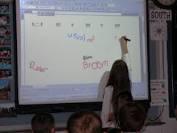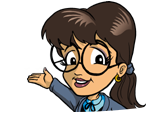Last month, the emerging roll of a teacherpreneur was introduced in this blog. This growing trend has only been happening over the last few years, but it is already making a huge impact in places where administrators are accepting the reality that students need to be taught how to be innovative thinkers if they are going to be solving problems of things we don’t even know about yet. This is the time for the development of teacher-leaders, design-thinkers, and teacherpreneurs. Ariel Sacks, a member of the TeacherSolutions 2030 Team, has “predicted that the schools of 2030 will need growing numbers of teacherpreneurs, which she described as teacher leaders of proven accomplishment who have a deep knowledge of how to teach, a clear understanding of what strategies must be in play to make schools highly successful, and the skills and commitment to spread their expertise to others—all the while keeping at least one foot firmly in the classroom.”
Educators love to use big words and lots of abstract concepts in writing, so I’ll simplify what I can. Comprehensive reading and writing skills will always be important, as that is the basis for how we share our ideas. What does change is how these skills are taught, and due to an increasingly electronic/digital environment, the tools are continually evolving. Those of you who are currently entering the educational field come from the first generation that has grown up with computer-based toys since birth, and it is easy for you to relate to a mobile device as an educational tool. You see its possibilities and potential, how it can help a student instantly reach outside the classroom walls.
All of us are familiar with the ubiquitous lesson plans that lay out in detail the curriculum for each school day. While this can be extremely helpful, it can be a ball and chain, or it can be a springboard for creative discussion. We are living in an era in which we don’t know what the questions are going to be in the next ten years, let alone what their solutions are; it’s important that we encourage our students to see possibilities.
The schools that will succeed in preparing future thinkers and innovators will be those that are open to using the talent that already exists on their own campuses—their teachers. Teacher leaders will be an important part of integrating the foundational skills with the need to think beyond what’s in front of them. We understand the need to have solid reading and writing skills, but it’s their future application that is changing. Forward-thinking administrators know that if they are going to keep highly motivated and creative teachers in the classroom, they need to give them a voice.
A lot of publicity has been given to the changing face of how some corporations are being run, particularly think-tanks such as Google, Microsoft, and Apple. The standard cubicle is not going to inspire the ideas for products that don’t yet exist, but will inevitably shape the future; eventually, we will see more of this approach in the classroom.
This is an exciting time to be in education, and I, for one, look forward to the great things that will be happening. These changes are not about throwing away the past, but rather using the past as part of the future; a strong educational foundation will always be necessary.
There are many highly innovative and creative after-school programs that are being offered, and the people who are running them are your future teacherpreneurs. Is your school adopting any of these teacher-leader concepts? If yes, be a part of it; if not, make it happen!



















